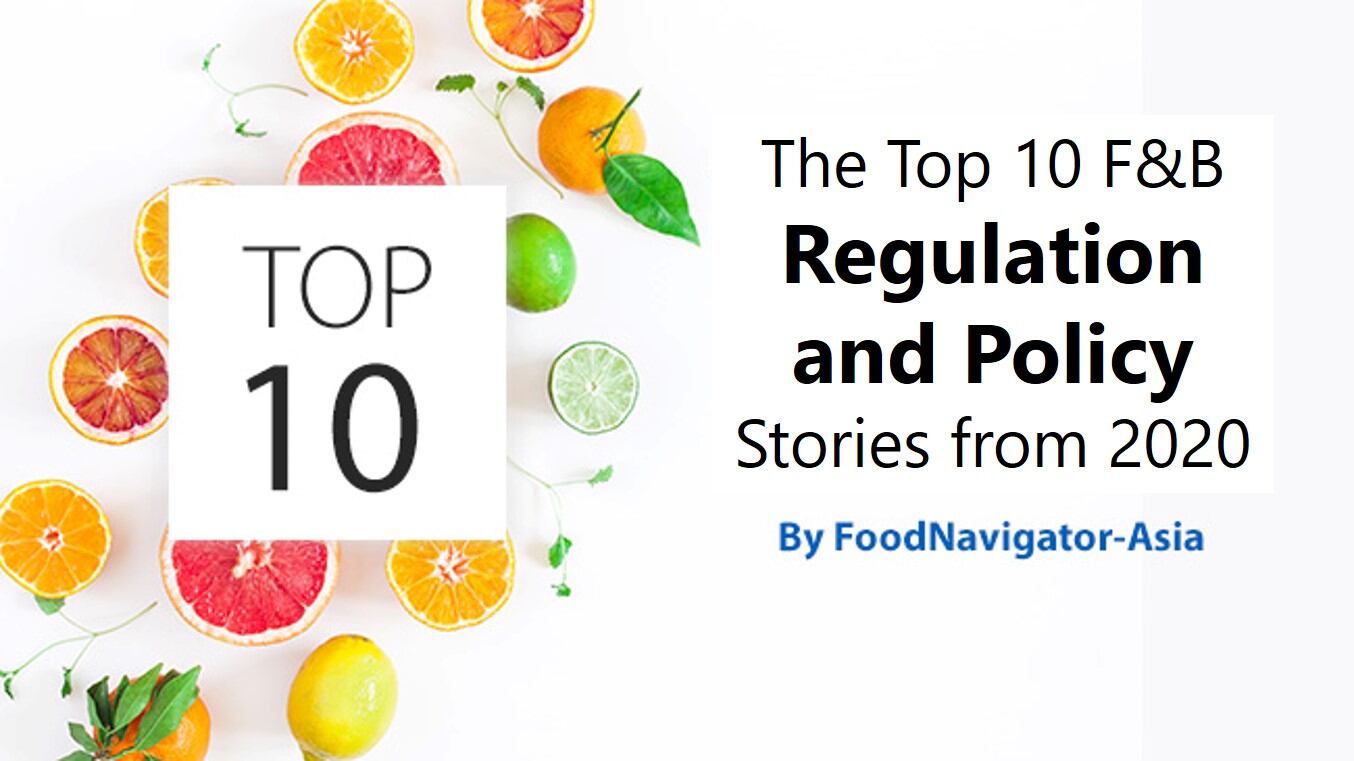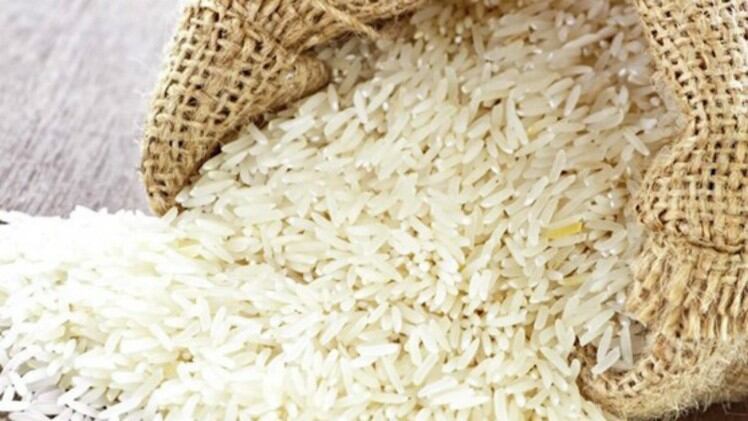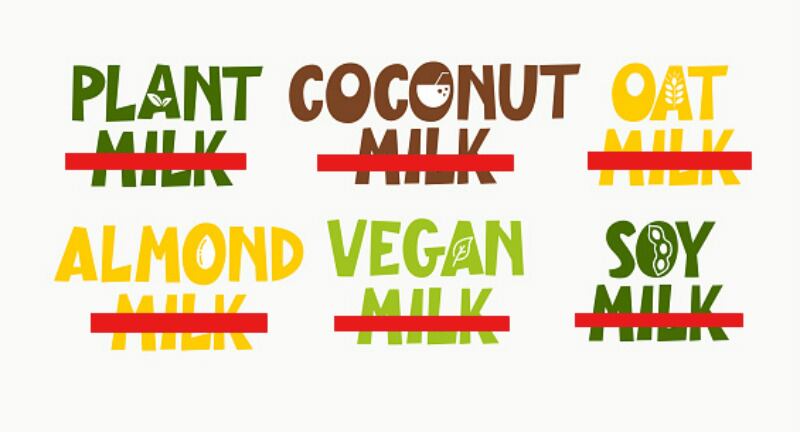1) Indonesia’s omnibus law
Indonesian president Joko Widodo signed the infamous Omnibus Law (Job Creation Law) into law in October 2020, and the implementation of this is expected to continue all through early-to-mid 2021.
“The Omnibus Law will see the creation of some 40 different regulations – 35 governmental and five presidential – so I very much doubt that everything will be passed quickly or even in one go,” Indonesian think tank Centre for Indonesian Policy Studies (CIPS) Head of Research Felippa Amanta told us.
“President Widodo previously asked the coordinating ministry to get the important regulations down within one to three months from its passing, which is a major rush, and I don’t think that will happen, more likely we’ll see this going through at least early to mid-2021.”
Within the Omnibus Law, Amanta believes that changes to the categories of food imports and business licensing are most likely to affect food and beverage companies in Indonesia – but these are not likely to be the ones first passed, or the ‘lowest-hanging fruit’ by any means due to their controversiality.
“The change to import regulations includes the allowing of food imports in based on factors other than just lack of domestic production, so food firms would hopefully have easier and cheaper access to raw materials and inputs from overseas such as sugar and wheat,” she said.
“The change to business licensing regulations would mean that big and small F&B companies alike would be able to more easily and effectively get their licenses, as it now provides for a streamlined electronic system and service level agreement provisions to streamline the entire process and make it faster instead of depending on the volatility of local governments.
“However, both of these are higher on the controversial scale than say land ownership or Special Economic Zones, which have the least resistance, so may not be released quite so quickly.
The imports regulations would see opposition from farmers or other parties worried that imported foods may take precedence over domestic supply, whereas the business licensing regulations would see resistance due to a ‘risk-based’ categorization the government is suggesting.
“What the new law will also do is classify companies into Low, Medium or High risk based on their assessed risk in areas such as health, safety and environment – [not everyone is going to be happy with that],” said Amanta.
“So I anticipate this will be amongst the regulations that see the most public criticism and may take some time into 2021.”
2) Domestic organic legislation in Australia
The organic industry in Australia has been primarily self-governed with little formal legislation thus far, but the industry has its hopes up that that some formal domestic standards are finally coming its way.
“Every time we lobby for domestic legislation, we’re usually asked why we want this, being basically the paragon of self-regulation in Australia – but the main reason is really for the exports scene. Having local standards would enable simpler market access for companies, especially for those with big export plans as presently we have to maintain multiple different organic accreditations from various countries,” Andrew Monk, Chairman of Murray River Organics and previous Chairman of industry body Australian Organic Limited (AOL), told FoodNavigator-Asia.
In the absence of government-enforced domestic organic standards governing the sector, a set of standards dubbed the National Standard for Organic and Bio-Dynamic Produce (National Export Standard) which exists to govern organic product exports to international markets has essentially been adopted by the industry in its self-regulation.
According to current AOL Chief Technical Officer Owen Gwilliam, the organisation has provided a detailed discussion paper to the Minister of Agriculture David Littleproud in 2020 which is currently sitting with the government, and AOL is looking forward to a response soon.
“Whether it be legislation, or another mechanism, we would like an enforceable standard for organic product label and marketing claims,” he told us.
“Our expectation would indeed be that the same standard that is already used for export would be overlain for domestic use, as this is already the defacto standard for all certified operators in Australia.
“So by virtue of the industry vastly already utilising the National Standard, there is not expected to be much, if any change to the process of certification – [just the formalisation of these standards for domestic enforcement].”
Gwilliam concurred that export market access was one of the main reasons the industry is hoping for such standards, highlighting that the lack of these had been an issue in the past.
“Maintenance of existing export market access, and opening up further export market access is of paramount importance for our organic industry. While exports were technically already regulated, the lack of a domestically enforced standard has been a stumbling block for negotiations in the past, therefore, having domestic regulation in place will help maintain existing market access, and pave the way for more,” he said.
“As this is an initiative that is generally seen as highly desirable for relevant stakeholders, we would love to see this progress quickly.
“Ensuring all relevant stakeholders are engaged may take some time, however it will be important that we get this right, so a thorough government and industry engagement process should be conducted.”
3) Plant-based labelling regulations in India and Australia
The Food Safety and Standards Authority India (FSSAI) published a draft notification in 2020 proposing to prohibit the use of dairy nomenclature for plant-based products, which if approved will likely be enforced come 2021.
“[Based on these regulations,] anything else cannot be called milk as per this definition [so even] if any final product is intended to substitute milk, a milk product or composite milk product, a dairy term shall not be used,” FSSAI Head (Codex/Regulations) Sunil Bakshi told us.
“[Such] provisions specifically prohibiting [the] use of any dairy term (including milk) for a product which is not milk or milk product or composite milk product [actually] already exists in our regulations, [and the current proposed restriction] is only a reiteration of what [already exists].”
This proposal has received an enormous amount of flak from the local plant-based industry, claiming that this is likely to stifle the growth of a budding sector with huge potential.
Plant-based advocacy organization Good Food Institute (GFI) India has reiterated this stand, stressing that the ban would be in contrast with ‘common sense regulations’ already in place for existing products with ‘dairy analogue’ names like peanut butter and coconut milk.
“Our research has shown that consumers for the most part do not seem to have any ambiguity about the source of cow’s milk vs plant-based milks, whether from soy, almond or other sources, and this is regardless of whether they are from urban cities or smaller towns,” GFI India Managing Director Varun Deshpande told us.
“In fact, most Indian consumers (84%) believe that plant-based milk is the right terminology to be used here.”
He also pointed out that the dairy industry does not necessarily need to view plant-based dairy as competition and push for this regulation to be passed, but instead see it as more of a potential opportunity to boost business.
“It's important to note that plant-based and animal-derived dairy, while similar in their end usage, are different categories. Our research indicates that the majority of plant-based dairy consumers (90%) also consume animal-derived dairy, and that people perceive each as having their own distinct benefits, so we believe that each category has room to grow independently of the other” he said.
“In fact, animal-derived dairy businesses and associations would do well to consider plant-based dairy as an opportunity to diversify income streams, with India's diverse crops presenting the chance to provide unique products to supplement their animal-derived portfolio.
A similar debate is also raging in Australia, where Agriculture Minister David Littleproud held a roundtable in September 2020 to discuss plant-based product labelling which the local plant-based industry dismissed as having ‘unbalanced representation’ due to having more voices from the meat and dairy sectors than from alternative protein.
Alternative protein advisory body Food Frontier’s Director of Policy and Government Relations Sam Lawrence told us that although more such discussions are upcoming, the Australia and New Zealand Ministerial Forum on Food Regulation has already dismissed calls to implement regulations on plant-based labelling, so he believes no such regulations will take place.
“[In addition, research has shown] that existing plant-based labelling is fit-for-purpose - 91% of Australians and 94% of New Zealanders have never mistakenly purchased a plant-based product thinking it was its animal-based counterpart, and vice versa,” he said.
But Littleproud appears to be persistent in pursuing this - the roundtable is expected to be the first of many such discussions in his new ‘working group’ approach, and he has confirmed intentions to continue holding such discussions moving into 2021.
“There is a place for both plant-based and genuine meat and dairy products in Australia’s agriculture system, but we need to set the divide so that one is not unfairly trading on the reputation of the other,” said Littleproud.
“More accurate and truthful labelling of plant-based products will prevent consumers from being misled and protect against the misuse of the meat and dairy sectors’ reputations.
4) Cell-based meat regulations in India
Whilst regulations about plant-based dairy nomenclature are being hotly debated in India, little has yet been discussed about anything in the cell-based sector.
Despite this relative silence, the FSSAI is actually in the process of gathering data to draft such regulations governing this sector and is expected to provide some initial guidance come 2021, according to information from Indian cell-based meat firm Co-Founder Dr Siddharth Manvati.
“Policy is currently definitely still a major pain point and bottleneck for the industry, and we are working with the government to try to push things forward to as to allow for at least pilot sales of our lab-grown chicken mince in the country,” he told FoodNavigator-Asia.
“I expect the government to set some policy guidance for cell-based products some time next year, perhaps by mid- to end-2021. They are definitely working at a faster pace than usual for this as they understand the potential, and FSSAI is now getting feedback from academics and the industry, using researchers from premium institutes to help them understand the sector better.”
Dr Manvati stressed that policies in this area are crucial for the cell-based sector to develop in India, though it will take time to get things right.
“The only way to understand and impact and backlash of such a product is to actually sell it first, and then only can we find the right way to approach this sector and the government can also get the policies right,” he said.
“India is a non-GMO country, and we are still working on how to best define lab-grown meat so as to not project it as a GMO, at present funding is still hard to find because of this misconception and we need policies to support the sector.”
Hopes are even higher now with the successful world-first approval of Eat Just’s cell-based chicken for commercial sale and consumption in Singapore, a success expected to pave the way ahead for more of such approvals in Asia.
5) Salt tax in Thailand
The Thai government has been debating the implementation of a salt tax for some time, and experts now predict that this is likely to happen in 2021.
“I think salt tax implementation will come in 2021 but only on certain food categories such as instant porridge and congee, instant noodles and maybe snacks,” Food Science and Technology Association of Thailand (FoSTAT) Chairman Professor Anadi Nitithamyong told us.
“[It could have happened earlier, but] the salt tax plan was delayed because the authorities are being extremely careful in designing and implementing the system [due to its wide-ranging impacts], plus COVID-19 had some effects too.”
The Thai government has not yet rolled out any details on the amount of tax expected for individual food products or categories, but the local Bureau of Tax Planning has stated that these ‘must be high enough to prompt consumers to change consumption behaviour [so the] higher the sodium content, the higher the levy’.
It is also expected that foods which use salt as a flavour enhancer, such as those mentioned by Prof Nitithamyong, will be taxed, but not foods which use it as a preservative.
“A lot of discussion has been carried out among stakeholders [and] many companies are working to adjust their formulations [to make it in time for the tax], but they may not be able to abruptly reduce salt/sodium in all SKUs to avert tax so they may have to absorb a certain amount of tax in the beginning,” added Prof Nitithamyong.
6) Uncertainty about sugar-sweetened beverage (SSB) labelling system in Singapore
Singapore announced a new SSB labelling system dubbed Nutri-Grade in March 2020, where SSBs would be labelled by colour according to sugar content: ‘A’ (dark green, least sugar), ‘B’ (light green), ‘C’ (yellow) and ‘D’ (red, most sugar).
The announcement was met with apprehension by the local food and beverage industry, and received a lukewarm response from consumers – technical details were expected end-2020 for implementation in 2021, but as of time of writing no such details have emerged yet.
“The technical details on the Nutri-Grade labelling scheme as proposed during the Committee on Supply 2020 notice in February 2020, have not been published as yet,” Food Industry Asia Policy Director Steven Bartholomeusz told us.
“[With regard to implementation of the scheme and SSB grading], currently FIA only has the information as published in the February 2020 Committee on Supply notice, and as per that notification, Nutri-Grade will be mandatory for C and D category SSB’s.”
Though no specifics are out yet, what is known is that beverages with more than 10% sugar content will be graded D and will also be subject to advertising controls, though there is no clarity on the implementation of this yet either.
“The advertising restrictions and the Nutri-Grade labelling scheme are linked so details of both would be expected together,” said Bartholomeusz.
“FIA’s stand on both of these regulations remains the same as before.”
FIA Executive Director Matt Kovac previously said that: “We believe this system is essentially shifting the goalposts [by suggesting] sugar thresholds should be changed to 10g per 100ml [at a time] when seven beverage manufacturers had already made a three-year commitment in 2017 to reduce sugar content to 12% or lower [and] industry had achieved significant progress in sugar reduction.
“[We also believe] that the decision to mandate labelling for Grade C and D beverages may overwhelm consumers and lead to confusion when making food and beverage choices.”
That said, the industry is taking steps to prepare for the upcoming implementation – according to Bartholomeusz: “Based on our Asia-wide reformulation studies, companies continue to focus on the reduction of sugar [as well as] salt and fat.”
7) Tax unification for beer and beer beverages in Japan
Japan is planning to lower the tax gap between different alcohols in the country by reducing taxes on regular beer (50% malt or more) but increasing taxes for happoshu (low-malt beer, with less than 25% malt) and new genre beverages (third beer, non-malt beers made from peas or corn.
Currently, regular beers are taxed more in Japan than happoshu and new genre, but the government is hoping to unify taxes around the three categories to ¥54.25 by October 2026, for manufacturers and importers.
In the first phase of its plans, in October 2020 Japan reduced tax on every 350mL of regular beer from ¥77 (US$0.74) to ¥70 (US$0.68), maintained happoshu tax at ¥46.98 (US$0.45) per 350mL, and increased new genre beer taxes from ¥28 (US$0.27) to ¥37.80 (US$0.37) per 350mL.
More revisions are upcoming over the next six years leading up to October 2023 and October 2026.
On the retail end, consumers can expect regular beers to cost around ¥181 (US$1.75)/350mL now and be reduced to ¥165 (US$1.60) by 2026, whereas happoshu and new genre beverages will increase from ¥127 (US$1.23)/350mL and ¥117 (US$1.13)/350mL respectively to ¥134 (US$1.30) by 2026.
Two of Japan’s biggest beer breweries, Kirin and Sapporo, both expect this tax revision to expand opportunities for all three categories, predicting an expansion of innovation and growth.
This is especially so for the new genre category, even though higher costs are eventually expected for these products.
“Although we [initially] assumed that the new genre would see a decrease in sales volume due to the tax revision, we [now believe] that sales will continue to be stronger than we had predicted at the beginning of this year,” Kirin Holdings spokesperson Ataka Takashima told us.
“This is because new-genre beers continue to perform well after the liquor tax revision due to lifestyle concerns caused by COVID-19. [Consumers] are drawn to new genre beverages for its lower price and beer-like taste, without the actual malt.”
Innovation in this area is already ongoing - Kirin recently released Japan’s first zero-sugar beer marketed under its Ichiban brand.
Sapporo Public Relations Manager Junko Fukuchi believes that impacts of the tax are still uncertain at this time due to how new it is, but believes that the effects of COVID-19 will still need to be considered in the short term.
“The beer market will be under the influence of COVID-19 over the next one to two years [regardless of the tax implementation],” she said.
“[We expect that the] effects of the tax revision would be better represented in year 2023.”
That said, from now till 2026, new genre beverages are definitely expected to continue to thrive as these will still cost less than regular beer, which will be attractive to price conscious consumers, especially amidst income insecurity caused by COVID-19.
8) Mandatory oil and milk fortification in India
FSSAI is set for a busy year with the implementation of another form of regulations upcoming soon – the mandatory fortification of edible oil and milk, expected to be implemented some time in the first quarter of 2021.
FSSAI Director (Social and Behavioural Change) Inoshi Sharma told FoodNavigator-Asia that these regulations will apply to all edible oil and milk products in India’s organized food sector, so it will be compulsory for all food and beverage companies dealing in these products to engage in fortification.
“We don’t expect an overly high barrier to the implementation of this regulation as most manufacturers are aware and already fortifying their products,” she said.
“The aim really is to make these fortified products as easily available as possible in the market such that consumers can conveniently access these, so as to gain consumer acceptance more quickly. Of course FSSAI will also be working to boost consumer awareness [so as to increase demand] as well.”
The regulations will first cover the mandatory fortification of oil and milk with Vitamins A and D, in hopes of tackling widescale deficiency of these two nutrients in the public health system, particularly because many Indians are vegetarian and thus have less access to these.
According to FSSAI’s Food Fortification Resource Centre (FFRC), some 35 to 60 million Indians suffer from Vitamin A deficiency which can lead to night blindness, and between 70% to 90% of the Indian population suffers Vitamin D deficiency which causes various illnesses like rickets and growth issues.
“Mandatory rice fortification will follow in about three to four years (to be fortified with iron, folic acid and Vitamin B12), and we are also looking to mandate wheat flour fortification with the same nutrients as well as salt with iron and iodine – all of these fortifications are currently already ongoing in the public distribution system, but not yet the open market,” added Sharma.




